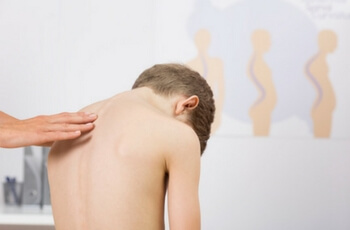Screening Your Children for Scoliosis

Always get an expert opinion. Call today to book an assessment!
Scoliosis is an abnormal sideways curve in the spine that, if not caught early, can become worse with age, cause significant back pain, and lead to arthritis in the spine. You want your children to grow healthy and strong, which is why it’s important to know the signs of scoliosis and start checking your kids around age eight.
Why does Scoliosis occur?
While doctors don’t know the cause of common types of Scoliosis, it seems to occur within families…. So if you or a relative has Scoliosis, keep a careful watch for it in your kids. In less common cases, certain neuromuscular conditions, such as cerebral palsy or muscular dystrophy can be the cause of Scoliosis.
When should you check?
Scoliosis curves usually start or become apparent from the ages of 10 – 15 or during their growth spurt, but sometimes earlier. The Scoliosis Research Society recommends that girls be screened twice, at 10 and 12 years of age (grades 5 and 7), and boys once at 12 or 13 years of age (grades 8 or 9).
Checking Your Kids
Checking your child’s spine for scoliosis is possible at home and in our practice. If you’re opting for the at-home method, do the following:
1. Have your child bend over at the waist. Stand behind them and check the curve of the spine. This is called Adam’s test for scoliosis. The back should have a smooth curve. Also take a look at the ribcage on both sides as they bend forward. If you notice the ribcage bulging more on one side than the other, it may be a cause for concern.
2. Next, look at your child’s back while they are standing and check for any of the following:
- Is one shoulder higher than the other? They should be level.
- Is one hip higher than the other? They should be level.
- Does the spine look straight or curved? Curving sideways is a problem.
If you think you may be seeing signs of scoliosis in your child, we’d love to help. It’s important to remember that discovering scoliosis early can often lead to improved management and excellent outcomes.
Long term risks
Depending on severity:
- Breathing problems (in severe scoliosis)
- Low back pain ranging from mild to severe.
- Pain in other areas of the body due to how your body is compensating
- Lower self-esteem.
- Persistent pain if there is wear and tear of the spine bones.
Treatment options
- Chiropractic adjustments
- Bracing
- Surgery
Please call or email today to book a free 10 minute consultation to find out more on how Chiropractic care can help, or to book a Chiropractic Initial Assessment for yourself or family member. 416-724-7888 or info@courtyardchiro.com
